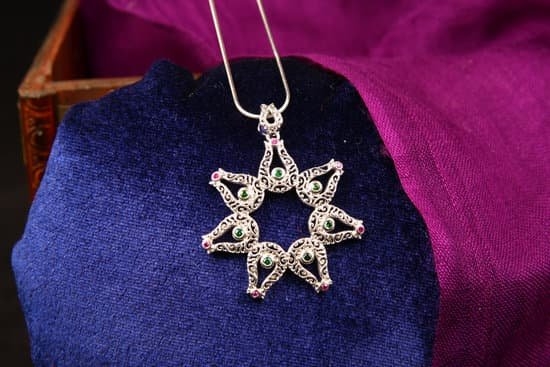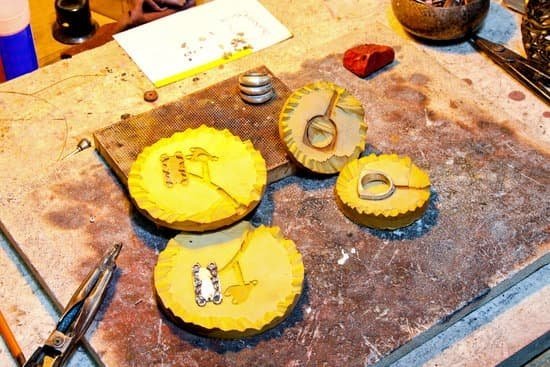When we think of diamonds, the first thing that comes to mind is exquisite jewelry. Their sparkling brilliance and timeless elegance have made them a symbol of luxury and wealth for centuries. However, diamonds have far more to offer than just their ornamental allure. These precious gemstones possess remarkable properties that make them invaluable in a wide range of industries and fields.
Beyond adorning our fingers and necks, diamonds reveal hidden potentials that have revolutionized various sectors. In the realm of industry, diamonds are rock-solid powerhouses that excel in manufacturing, construction, and engineering. With their exceptional hardness and thermal conductivity, diamonds are perfect for cutting tools, drills, and abrasives.
In the medical field, diamonds are making groundbreaking contributions as well. Their precision and biocompatibility have led to their use as surgical tools, implants, and drug delivery systems. Diamonds are playing a vital role in enabling intricate procedures and improving patient outcomes.
In the world of technology, diamonds shine brightly as well. They possess exceptional electrical properties that make them indispensable in the production of high-performance electronic devices like diodes and transistors. Diamonds truly are at the cutting edge of innovation.
And it doesn’t stop there – even in renewable energy technologies, diamonds are finding new applications to enhance efficiency and longevity. From solar panels to fuel cells, diamonds are paving the way for environmentally friendly solutions.
But what about low-quality diamonds? Even these gems find purpose beyond their dazzling counterparts. They excel in cutting tasks, grinding operations, polishing projects, asphalting processes, and mining operations.
Diamonds also captivate us through decorative items such as sculptures, chandeliers, and luxury home decor. Additionally, they inspire creativity in artistic ventures including paintings, installations,and fashion design.
Lastly,diamonds have an enduring history as a form of currency and wealth preservation.As an investment vehicle,diamonds offer stability,portability,and diversification for portfolios.
As we delve into the many facets of diamonds, we discover a world where their versatile beauty transcends jewelry and touches every aspect of our lives.
Industrial Applications of Diamonds
The industrial applications of diamonds have made them a rock-solid powerhouse in various sectors. Diamonds are not just known for their beauty and value in jewelry; they also possess superior properties that make them indispensable in industries such as manufacturing, construction, and engineering.
One of the key reasons why diamonds are extensively used in the industrial sector is their exceptional hardness. Diamonds are the hardest known natural material, making them perfect for cutting tools, drills, and abrasives. Diamond-tipped tools have revolutionized industries, enabling precise cutting and shaping of materials like metals, glass, concrete, and even gemstones. They ensure efficiency and precision in manufacturing processes while minimizing wear and tear.
Another remarkable property of diamonds is their excellent thermal conductivity. This property makes diamonds invaluable in industries that involve high-temperature processes. Diamonds are used as heat sinks in electronic devices to dissipate heat effectively and prevent damage to sensitive components. Their thermal conductivity also makes them ideal for use in laser technology, where they can efficiently transfer heat away from the laser source.
| Industry | Application |
|---|---|
| Manufacturing | Diamond-coated tools for cutting and grinding precision parts |
| Construction | Diamond-tipped saw blades for cutting stone, concrete, and asphalt |
| Engineering | Diamond-based abrasives for polishing surfaces with precision |
Overall, diamonds’ superior properties have made them an integral part of numerous industries worldwide. Their hardness and thermal conductivity empower industries with tools capable of precise cutting, grinding, polishing, and heat dissipation. The industrial applications of diamonds go beyond their traditional use in jewelry, showcasing the vast potential of these precious gems.
Revolutionizing Medicine
Diamonds, though commonly associated with luxury and adornment, are proving to be game-changers in the field of medicine. The unique properties of diamonds, including their precision and biocompatibility, make them highly valuable in the development of medical devices. From surgical tools to implants and drug delivery systems, diamonds are revolutionizing the way healthcare is practiced.
The Precision Powerhouse
One of the main reasons why diamonds are prized in the medical field is their exceptional precision. Diamonds can be precisely cut into various shapes and sizes, allowing for the creation of incredibly accurate medical instruments. Surgical tools made from diamonds have a sharpness that far surpasses traditional stainless steel instruments. This sharpness enables surgeons to perform intricate procedures with greater accuracy and reduced tissue damage.
In addition to their sharpness, diamond-based tools also offer excellent durability. They retain their cutting edge for a longer period of time compared to other materials like steel or ceramic. This extended lifespan reduces the frequency of replacements during surgeries and ensures consistent performance over time.
Biocompatible Brilliance
Another advantage of using diamonds in medical devices is their biocompatibility. Diamond surfaces can be modified to create a biological-friendly environment that minimizes adverse reactions within the body. This makes them ideal for implants and drug delivery systems that come into direct contact with bodily tissues.
Researchers have been exploring diamond coatings for various medical applications due to their unique properties. For example, diamond coatings on orthopedic implants reduce friction between bone and metal, improving longevity and reducing wear-induced inflammation. Similarly, diamond-coated electrodes used in neural interfaces provide enhanced biocompatibility, enabling long-term integration with nerve tissue without causing damage or rejection.
The biocompatible nature of diamonds also extends their usefulness beyond implantable devices. Diamond nanoparticles show promise as carriers for targeted drug delivery systems since they have high surface area-to-volume ratios and can be functionalized with different molecules to carry drugs to specific sites in the body. The biocompatibility, strength, and versatility of diamonds make them an invaluable resource for advancing healthcare technology.
The Cutting Edge of Technology
Diamonds have proven to be a crucial component in the field of electronics, revolutionizing technology and enabling high-performance devices. Due to their exceptional electrical properties, diamonds are being increasingly utilized in various electronic applications, including diodes and transistors.
The Power of Diamond-Based Diodes
One of the significant contributions of diamonds in electronics is their use in diodes. Traditional silicon-based diodes face limitations when it comes to handling high temperatures and high power densities. In contrast, diamond-based diodes offer superior thermal conductivity and can operate at higher temperatures without degradation.
Diamond diodes have shown immense potential for applications such as power conversion in electric vehicles, renewable energy systems, and other high-power devices. Their ability to withstand extreme conditions while maintaining excellent electrical performance makes them an attractive choice for advanced electronics.
Diamond Transistors: Paving the Way for High-Speed Devices
Transistors form the backbone of modern-day electronics, enabling the amplification and switching of electrical signals. Diamonds have made a significant impact in this area by offering superior performance compared to traditional semiconductor materials like silicon.
Diamond transistors provide exceptional electron mobility, enabling faster switching speeds and higher-frequency operation. This makes them ideal for applications requiring high-speed data processing and communication systems. Additionally, diamonds’ unique properties also make them radiation-hardened, making them suitable for aerospace and defense-related electronic applications.
Exploring Quantum Computing with Diamonds
The emerging field of quantum computing has also found diamonds to be an invaluable asset. Diamonds containing defects known as nitrogen-vacancy (NV) centers are being explored for their potential use as qubits – the fundamental units of information storage in quantum computing.
The NV centers’ ability to store information robustly at room temperature makes diamond an attractive candidate for building quantum computers that can operate outside of highly controlled laboratory conditions. Researchers are actively studying ways to control and manipulate the NV centers in diamonds, unlocking the immense potential for quantum computing breakthroughs.
Environmentally Friendly Solutions
Diamonds, already known for their beauty and durability, have found new applications in the emerging field of renewable energy. This section will explore the role of diamonds in the energy sector and how they contribute to more efficient and sustainable energy solutions.
One area where diamonds are making an impact is in solar panel technology. Solar panels convert sunlight into electricity, but over time they can become less effective due to dust and dirt buildup on their surface. However, by coating the surface of solar panels with a thin layer of diamond film, this issue can be mitigated.
The smooth and hydrophobic nature of diamonds helps repel dust particles and water, thereby enhancing the efficiency and longevity of solar panels. Additionally, diamonds have excellent thermal conductivity properties, allowing them to dissipate heat from solar panels effectively.
Fuel cells are another area where diamonds show promise. Fuel cells are devices that generate electricity through electrochemical reactions involving hydrogen as fuel. One challenge faced by fuel cell technology is finding materials that can withstand the highly corrosive environment inside a fuel cell while maintaining high electrical conductivity.
Diamonds possess both these qualities, making them suitable candidates for use as electrode materials in fuel cells. Furthermore, diamonds exhibit low friction characteristics, which helps reduce wear and tear on the fuel cell components.
| Diamond Applications | Benefits |
|---|---|
| Diamond-coated solar panels | Enhanced efficiency and longevity due to dust-repellent properties |
| Diamond electrodes in fuel cells | High electrical conductivity and corrosion resistance |
As society moves towards greener energy solutions, diamonds have emerged as a valuable tool in improving the performance and sustainability of renewable energy technologies. Whether it be enhancing the efficiency of solar panels or enabling more durable and efficient fuel cells, diamonds are helping pave the way towards a cleaner and more sustainable future.
Unleashing the Beauty
While diamonds are famously known for their use in high-end jewelry, not all diamonds meet the standards of clarity and brilliance required for gemstones. However, these low-quality diamonds still possess unique properties that make them valuable in various industrial applications. From cutting tools to mining operations, low-quality diamonds unleash their beauty and contribute to a wide range of manufacturing processes.
One significant application for low-quality diamonds is in cutting, grinding, and polishing tasks. Due to their exceptional hardness, these diamonds prove to be effective abrasives for shaping and refining materials such as glass, ceramics, metals, and even other types of stones.
Industries like construction, automotive manufacturing, and precision machining heavily rely on diamond-embedded tools to achieve precise cuts and smooth finishes. The superior durability of low-quality diamonds allows them to withstand the demanding conditions of these operations and ensure long-lasting performance.
Furthermore, low-quality diamonds find essential utility in asphalting and mining operations. In the asphalt industry, diamond-tipped blades are used to cut through roads or pavements during repairs or installations. These blades provide clean cuts with minimal disruption to the surrounding areas. Similarly, within the mining sector, low-quality diamonds are indispensable tools for diamond drilling machines used in exploration and extraction processes. The strength and hardness of these diamonds enable efficient drilling without compromising on accuracy.
The mystique of Diamonds
Diamonds have long been associated with beauty, luxury, and wealth. Beyond their popularity in the realm of jewelry, diamonds also hold a mystique that lends itself to decorative and artistic uses. From sculptures to chandeliers, diamonds are often incorporated into various ornamental pieces that add a touch of opulence and elegance.
One of the most prominent ways in which diamonds are used decoratively is in the creation of sculptures. These sculptures can range from small delicate pieces to larger-than-life installations that captivate viewers with their shimmering brilliance. Diamonds are often set into intricate designs, enhancing the overall aesthetic appeal of the artwork. The use of diamonds in sculptures not only adds value to the piece but also elevates it to an extraordinary level of artistry.
In addition to sculptures, diamonds are frequently found adorning chandeliers and other luxury home decor items. Chandeliers, with their cascades of sparkling crystals, have long been a symbol of grandeur and extravagance. Incorporating diamonds into these elaborate light fixtures further enhances their allure and creates a dazzling display when the light catches each diamond’s facets. These decorative uses highlight how diamonds can transform everyday objects into breathtaking works of art.
Artists also incorporate diamonds into their creative expressions in various mediums, such as paintings and fashion design. Paintings adorned with diamonds can add texture, depth, and an element of surprise to traditional forms of art. Fashion designers often utilize diamonds as accents or embellishments on garments or accessories, enhancing their glamour and sophistication. The incorporation of diamonds into these artistic realms allows for an exploration of beauty beyond conventional boundaries.
Overall, the mystique surrounding diamonds extends far beyond their use in jewelry. Through decorative pieces like sculptures and chandeliers or artistic expressions in paintings and fashion design, diamonds continue to captivate and inspire creativity. With their unmatched brilliance and elegance, diamonds bring forth a sense of wonder and enchantment that transcends traditional boundaries while adding a touch of luxury to our surroundings.
Diamonds as Currency
Throughout history, diamonds have served not only as a symbol of beauty and luxury but also as a form of currency and wealth preservation. The enduring value and rarity of diamonds have made them highly desirable assets that can be utilized as a store of value. This section explores the historical use of diamonds as a currency and their viability as investments for diversifying portfolios.
Historically, diamonds have been used as a form of currency in various civilizations. In ancient times, they were highly valued for their scarcity and durability. Diamonds were traded among wealthy individuals and used to facilitate economic transactions. The diamond trade routes contributed to the spread of these precious gems across continents, emphasizing their worth as a universal medium of exchange.
In modern times, while diamonds are not commonly used as official currencies, they still hold significant value in the investment world. Many individuals see diamonds as an alternative asset class that can provide diversification to investment portfolios. Compared to traditional forms of currency like fiat money, which can be subject to inflation or devaluation, diamonds are considered a tangible asset that preserves its value over time.
The diamond market has well-established mechanisms for the grading and certification of diamonds based on the “Four Cs” – carat weight, clarity, color, and cut. This standardization ensures transparency and trust in the valuation process. Investors can purchase certified investment-grade diamonds with confidence, knowing that they possess qualities that will maintain their worth in the long run.
Conclusion
In conclusion, diamonds have proven themselves to be much more than just a symbol of luxury and beauty in the realm of jewelry. This article has showcased the diverse possibilities that diamonds offer beyond their traditional use. From being a rock-solid powerhouse in various industrial sectors to revolutionizing medicine as medical devices, diamonds continue to surprise us with their remarkable properties and applications.
One of the most notable areas where diamonds have made a significant impact is in the field of technology. Their exceptional electrical properties have opened doors for high-performance devices, revolutionizing the electronics industry. Additionally, the emerging utilization of diamonds in renewable energy technologies underscores their potential to enhance efficiency and longevity in solar panels and fuel cells, contributing to a more sustainable future.
Furthermore, diamonds have found their way into decorative and artistic realms, adding allure and mystique to sculptures, chandeliers, and luxury home decor. The artistic incorporation of diamonds in paintings, installations, and fashion designs showcases their ability to elevate creativity and make stunning statements.
Lastly, diamonds also serve as a store of value and a means of wealth preservation. Throughout history, they have been used as a form of currency and continue to be considered as viable investments for diversifying portfolios.
In summary, the versatility and value that diamonds bring beyond jewelry are truly remarkable. From industrial applications to medical devices, from cutting-edge technology to environmentally friendly solutions, from artistic endeavors to being stores of value – diamonds continue to captivate us with their hidden potential and possibilities for various industries and fields.
Frequently Asked Questions
What can diamonds be useful for?
Diamonds have several practical uses in addition to their aesthetic appeal. One of the most common applications is in industrial settings, where their hardness and thermal conductivity make them ideal for cutting, grinding, and polishing various materials.
Diamond-coated blades and drills are used in industries ranging from construction to mining, where toughness and precision are essential. Additionally, diamonds also find use in electronics as they possess excellent electrical insulating properties, making them valuable components in high-performance semiconductors.
Do diamonds have any real use?
While diamonds may not have a widespread everyday use like other commodities, they do serve important purposes beyond their symbolic meaning. As mentioned earlier, diamonds have significant industrial applications due to their hardness and durability.
They are used extensively in manufacturing industries that require cutting or grinding materials such as metals or stones. Moreover, diamonds’ unique optical properties have enabled advancements in lasers and medical imaging equipment.
What are three reasons why diamonds are valuable?
There are three key reasons why diamonds hold value both economically and culturally. Firstly, diamonds are rare gemstones formed deep within the Earth over millions of years through intense heat and pressure. This scarcity contributes to their high value since they cannot be easily replicated or mass-produced artificially.
Secondly, the diamond industry has successfully built demand through effective marketing campaigns that promote diamonds as symbols of love, commitment, and prestige. Finally, the intricate process involved in extracting rough diamonds from mines and the subsequent cutting and polishing required before they reach market-ready form adds to both the monetary value and perceived worth of each diamond.

Welcome to my jewelry blog! My name is Sarah and I am the owner of this blog.
I love making jewelry and sharing my creations with others.
So whether you’re someone who loves wearing jewelry yourself or simply enjoys learning about it, be sure to check out my blog for insightful posts on everything related to this exciting topic!





